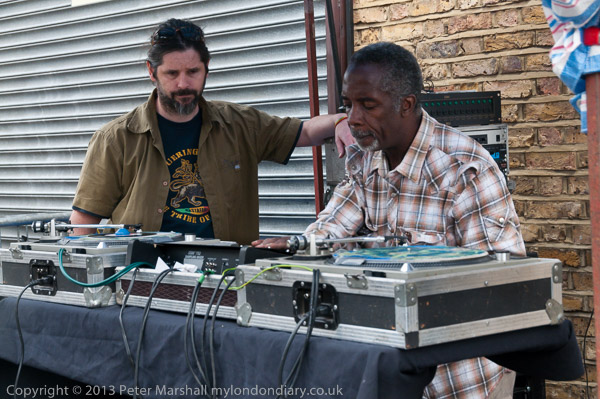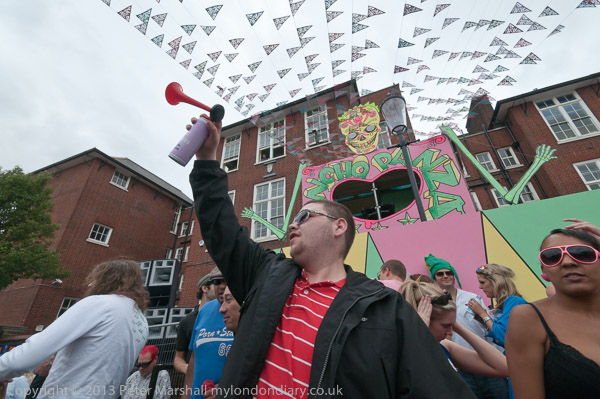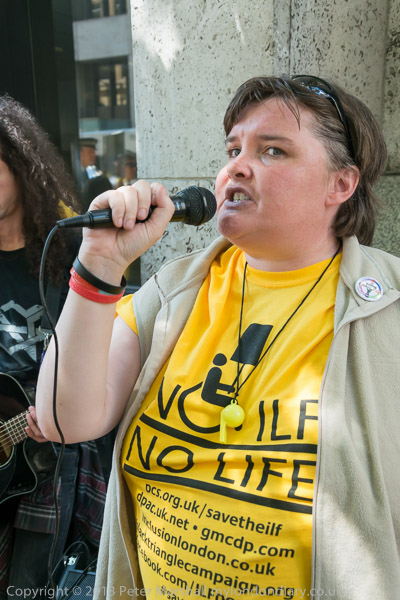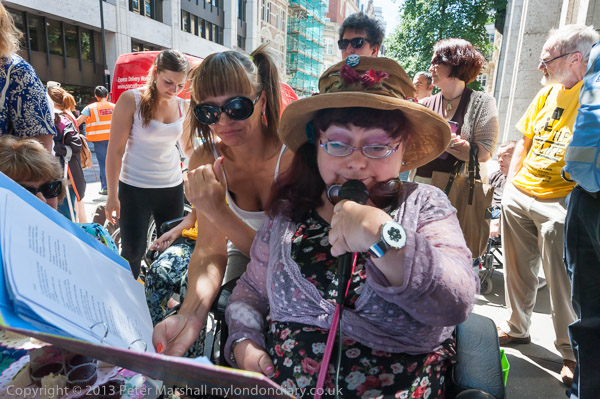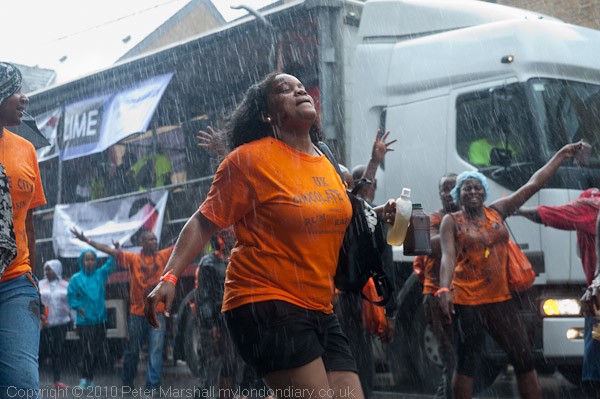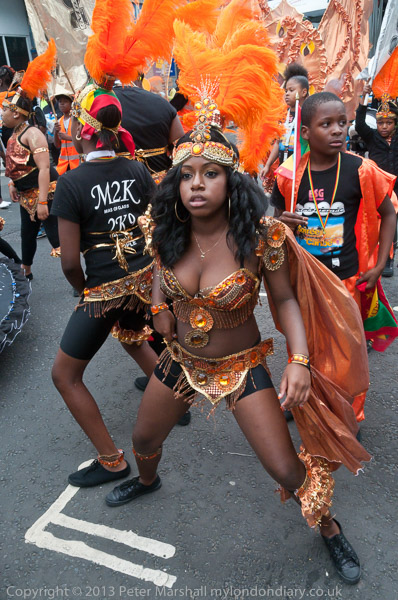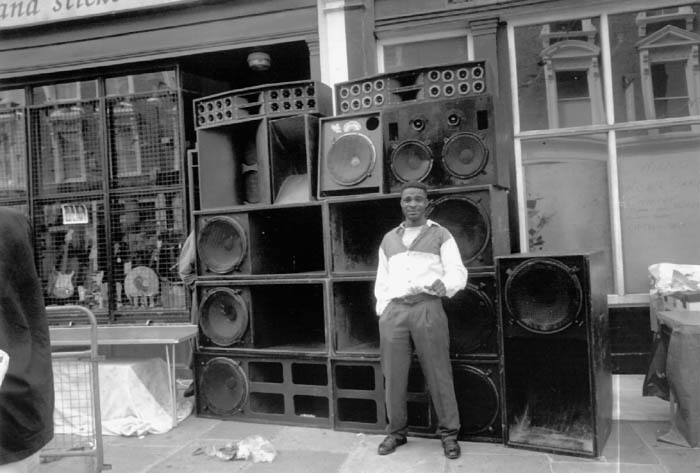I read the article India’s 10 best contemporary photographers you should know on World Photography Day and it set me thinking about Indian photography, and also about lists such as this. World Photography Day may have passed you by – it almost did me – but it is a project started by a young Australian photographer in 2009, “with the dream to unite local and global communities in a worldwide celebration of photography.” The day chosen was August 19th, the anniversary of Daguerre’s patent being purchased by the French government and announced as a gift “Free to the World” in 1839. Except for Britain, where Daguerre had separately acquired a patent for it 5 days earlier. So it isn’t perhaps a very suitable date for those of us in the UK to celebrate.
But there were a number of events to mark World Photography Day, although I could only find five – and those rather obscure – marked on the world map on the web site. One not listed was at the Indira Gandhi National Centre for Arts in Mumbai, where Drawn From Light, an exhibition of the early photographic history of India opened, with one of the ten from the list, Dayanita Singh, as guest of honour. There was also a display of 40 vintage cameras, including a daguerreotype camera, part of Dilish Parekh’s collection of 4,425 cameras. And I sometimes think I have far too many.
The exhibition is from the Alkazi Collection of Photography, which is extensive, and has formed the basis of a number of publications, but has relatively little material online.
Some years ago I wrote a series of articles on early photography in India, mainly covering the work of British photographers who worked there in the nineteenth century. Before working on that I had hardly been aware of the splendid work of Lala Deen Dayal. A few years later on this site I wrote a little about him again, including this paragraph:
Lala Deen Dayal (1844-1905) is one of relatively few photographers to have been honoured by a postage stamp issue, and I was very pleased to receive a commemorative album from his great granddaughter who runs the web site about his work containing examples of the 500 Rupee stamp issued in November 2006. Few photographers can claim an edition of 0.4 million!
There are still a number of links on the web to the pieces I wrote about him and several other photographers working in India, even though these have been unavailable for seven or eight years, for example at Harappa.com, which does still contain much interesting material about India and Indian photography. So I thought I might revisit the article about Lala Deen Dayal, and try and bring it a little up to date. Mostly it is as I wrote it in 2003. Unfortunately I’ve been unable to find some of the actual photographs I wrote about that were available on the web back then – please post links in the comments if you can do so.
Lala Deen Dayal
Part 1: Key Facts
Chronology
- 1844 Lala Deen Dayal was born to a Jain family, following one of the ancient religions of India (dating back almost 3000 years) in 1844 in Sardana, near Meerut, a small town in north India.
- 1857-8 Meerut was the scene of the first serious rioting in the 1857-8 uprising (the ‘Indian Mutiny’) and the events will doubtless have made a strong impression on the 13-year old Deen Dayal.
- ca 1861 Dayal studied enginering at the Thomason Civil Engineering College in Roorkee (now the University of Roorkee), the first engineering college in the British Empire (and only the third in the world) set up in 1847 by to train Indians to provide the roads, railways and other infrastructure needed for the exploitation of the country’s resources.
Dayal was apparently a brilliant student, covering the five-year course in only three years, emerging with a first class degree and an almost perfect mark. It was while here in 1863 at the age of 19 that he first learnt photography.
- 1866 After graduating, he started working for the Indian Civil Service at the Department of Works Secretariat in Indore, as a draftsman and estimator. He continued to photograph and was encouraged by some of the British civil servants, in particular Sir Henry Daly, the Agent to the Governor General for Central India.
- 1875 Daly commissions Dayal to photograph the royal visit by the Prince of Wales. Later he takes him with him to photograph on a trip to Bundelkhand.
- 1882/3 Dayal returns to Bundelkhand with the new Agent, Sir Lepel Griffin.
- 1885 Dayal photographs the Viceroy of India, Lord Dufferin, and his wife, Lady Dufferin. They are so impressed by the quality of his work that they appoint him as official photographer. Dayal resigns his civil service job to become a full time photographer. He moves to Hyderabad where he becomes court photographer to the Mir Mahbub Ali Pasha, the sixth Nizam and opens a photo studio at the nearby military station of Secunderabad, the largest in India, where there was a great demand for portraits. The Nizam awards Dayal with a knighthood for his photographs of him, giving him the title of Raja Musavir Jung (‘Bold photographic warrior’), although Dayal only uses the first name, becoming Raja Deen Dayal.
- 1886 Eighty-nine of Dayal’s pictures are printed by the carbon process to illustrate Griffin’s book ‘Famous Monuments of Central India’ (London, 1886)
- late 1880s Opens studios in Bombay and Indore. His two sons, Lala Gyan Chand and Raja Dharam Chand both work for the business, Raja Deen Dayal & Sons, as photographers.
- 1892 Opens Zenana (women only) studio in Hyderabad, supervised by the wife of the Times Correspondent, Mrs Kenny Livick.
- 1893 his display of views of India received a special award at the World Colombian Exposition in Chicago.
- 1897 Queen Victoria granted the firm a Royal Warrant.
- 1902 Dayal photographs the visit of Lord and Lady Curzon to the Nizam. Lord Curzon was the Viceroy (governor) of India, and his wife was an American heiress, daughter of Levi Leiter, the founder of Marshall Field’s. Some of Dayals best-known images show their tiger shoot.
- 1904 His son, Raja Dharam Chand dies.
- 1905 Dayal dies. The business is continued by his surviving son, Lala Gyan Chand, and later his grandsons, including Shri Ami Chand (Amichand Deen Dayal.)
- 1912 Nizam Mahbub Ali Khan dies.
- 1919 Lala Gyan Chand dies. For the next 15-20 years the business declines until Ami Chand is old enough to turn its fortunes around. His work includes an extensive record of the era of Nizam VII Mir Osman Ali Khan.
- 1987-92 Amichand’s daughter Hemlata Jain organises exhibitions of the work by Dayal using prints her father had preserved, in Bombay, London and Pune.
- 1984 Amichand dies. His sons continue to run the photographic studio in Hyderbad.
- 2002 The Deen Dayal web site, is put on line by his great grand daughter Hemlata Jain. Much of the information in this feature comes from this site.
Part 2: A Deserved Renown
His reputation
Although Lala Deen Dayal had an immense reputation in India as well as being recognised abroad during his lifetime, there are relatively few mentions his work in the main histories of photography. Only since the exhibitions around 1990 and in recent years with major shows on Indian photography in general has his work begun to get some of the recognition it deserves.
Part of the reason for this may lie in his identification as a photographer of the colonial era. Following the successful completion of the struggle for independence in 1947 there was perhaps a desire to forget the excesses of the past, some of which are evident in his work.
Foundations of success
Dayal’s success was founded on technical excellence and hard work. He was apparently a deeply devout and hard-working man, often putting in an eighteen hour day to ensure the success of his business. The evidence of the pictures very much shows him to have been a perfectionist, striving for every detail to be perfect.
Groups
The meticulous attention to detail is very much evident in the group photographs that he made. One of the more fascinating was taken on May 22, 1892, which shows Nawab Ghalib Jung and friends, including several European (or, most likely, American) women in white dresses with white hats, in a group of around twenty people gathering around and apparently listening with delight to that new-fangled state of the art American treadle phonograph, complete with long tubes to carry the sounds to the more privileged of their ears. It is a carefully posed group with a lively sense of animation.
The Nizam’s Palace
Dayal’s India was very much an India of colonial occupation. Many of his portraits were of the soldiers, civil servants and their wives who were in charge of the country. They were the ones who could afford his services. As court photographer to the Nizam, he was working for a man supported by the colonial administration, with a lifestyle that was very much modelled on the English upper classes. His palace (photographed by Dayal) was very much in a European style, both in architecture and in its furnishings.
His view of the interior of the Nizam’s palace shows a galleried sitting room with grand curtains and heavily ornate chandeliers, in the most extravagant of nineteenth century European taste. The decorated ceilings and walls, and ornate padded furniture all show the Nizam’s immense wealth. Dayal’s careful choice of camera position and the fine natural lighting, doubtless with some help in the darkroom as well as possibly the use of mirrors to direct more light towards the ceiling make this an impressive and very clear picture.
Of course there are Indian aspects in the photographs of the Nizam and his court, with some of the visitors in Indian dress, but at times it seems a parody of the excesses of a European aristocracy rather than an authentic nationalism. Dayal himself of course was simply the photographer, engaged to record the events, and whether the occasion was a soiree or a tiger shoot he did so with great care and precision.
Part 3: Indian Views
Street View of Ulwar (This image is no longer on line so far as I can see.)
Dayal’s ‘Street View of Ulwar’ is taken from a high viewpoint looking along a main street of the town the capital of Ulwar state (now known as Almar.) On the left side of the image is the shaded side of the street; Dayal is roughly at the level of the tops of the roof of the nearby building, perhaps a temple. On the right of the picture, the deep street is fringed by shops with taller light stone buildings behind them.
The sunlit street is busy with people, in its centre what looks like an early car, although the date of 1882-6 makes this impossible – perhaps it is a rear view of a horse-drawn vehicle. The shops have awnings to shade them from the sun and the street is busy with people. In the distance we see a fort, possibly the photographer and his camera are standing on top of a similar one. Further on, we see the mountains towering above the town, and, above them a dramatic cloudscape.
Chichai Waterfall near Rewalala, 1882 (see p140 Zahid R Chaudhary’s Afterimage of Empire- AE- which can be viewed on line)
Dayal choose a dramatic viewpoint for his picture of the ‘Chichai waterfall’ in 1882, making the most of a drop front on his camera to put the horizon very high in the view.
His viewpoint is actually from a slightly higher point than the top of the falls, giving a view back along the top of the plain along which the river runs until reaching this apparently enormous drop. The slow shutter speed used – probably something between 5 and 20 seconds – gives the water a blurred, almost ethereal quality that increases as it falls and perhaps spreads out giving more spray.
River at Indore (a similar image at p128 in AE)
In contrast, the river at ‘Indore’ is smooth and glassy as it flows through a grove of palm trees, languorously curving out over the placid stream (again an effect increased by the long exposure used.) The diffuse light emphasizes the near-silhouettes of the trunks and fronds against the plain sky.
Daulatabad Fort (This paticular image not on line, others of the fort here.)
The east scarp of ‘Daulatabad Fort’ rises steep and unassailable ninety metres from the stream below, and the photographer has chosen a viewpoint where he appears to be hovering in mid-air to view the scene. In the foreground, filling most of the right of the picture, it towers above the more distant plain in the left half of the picture, starting far below the camera and stretching into the distance.
The scene is a thrilling combination of horizontal and vertical, with an aerial perspective that enhances its effect, and creates a hovering bulk of distant mountain on the horizon below a radiant sky. The fort, built by Hindus in the 12th century in this imposing position, was one of the many properties belonging to Dayal’s employer, the Nizam of Hyderabad.
Part 4: Elephants & Tigers
Elephant Battery in Action at Fort Jhansi (No longer on line.)
Some of the more engaging of Dayal’s pictures – at least to a western eye – are those of elephants in action. The broad sweep of landscape below the fort in his ‘Elephant Battery in Action’ at Fort Jhansi, with clouds of smoke, groups of men, elephants, bullocks and cannon create the effect of some the filming of some battle epic.
Shikar – the Tiger Shoots
Dayal also recorded a number of the Nizam’s tiger shoots. These included one arranged for Lord and Lady Curzon in 1902, which shows the ‘shooting party’ of nine men and two ladies arranged across the base of a tree in front of the dead body of a tiger. Apparently Lady Curzon had minutes previously witnessed the death of the Nizam’s head tiger hunter, who had unwisely dismounted from his elephant and been leapt upon by a tiger. (Two different images from the shoot on the British Library site.)
Among the other pictures of this subject on the Deen Layal site is a picture of the Nizam himself under a wall covered with the skins and some heads of the tigers he had shot, probably around fifteen or twenty, standing proud with his gun under his arm.
Also on the Deen Dayal site are a number of fine portraits by Dayal, and in the ‘Heritage’ section, images of ancient monuments from various towns and cities in India. Fairly large numbers of some of Dayal’s pictures were probably produced, especially for those that he made for the Nizam, who apparently often presented his visitors with albums of them. He also sent an album to Queen Victoria, who was delighted to receive these images of a vital part of her empire she never visited. The largest existing collection of Raja Deen Dayal photographs is apparently housed at the Indira Gandhi National Centre for the Arts in Mumbai, having been bought by the Indian Government.
Dayal’s career as a photographer was long and distinguished, fully meriting the Urdu verse written about him by the Nizam, which – according to the Deen Dayal web site can be translated as:
“In the art of picture making, Skill surpassing all, A master of masters is Lala Deen Dayal.”





